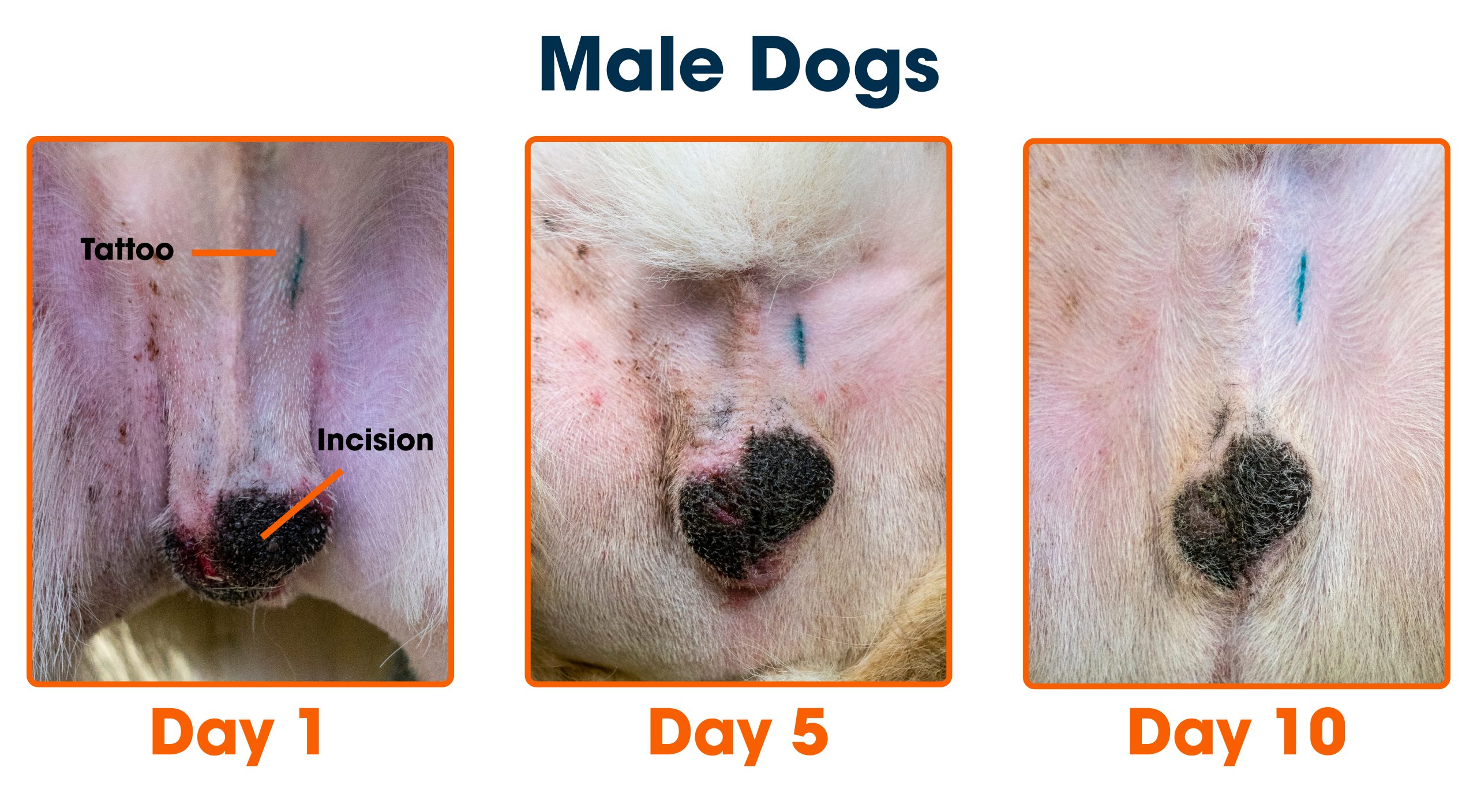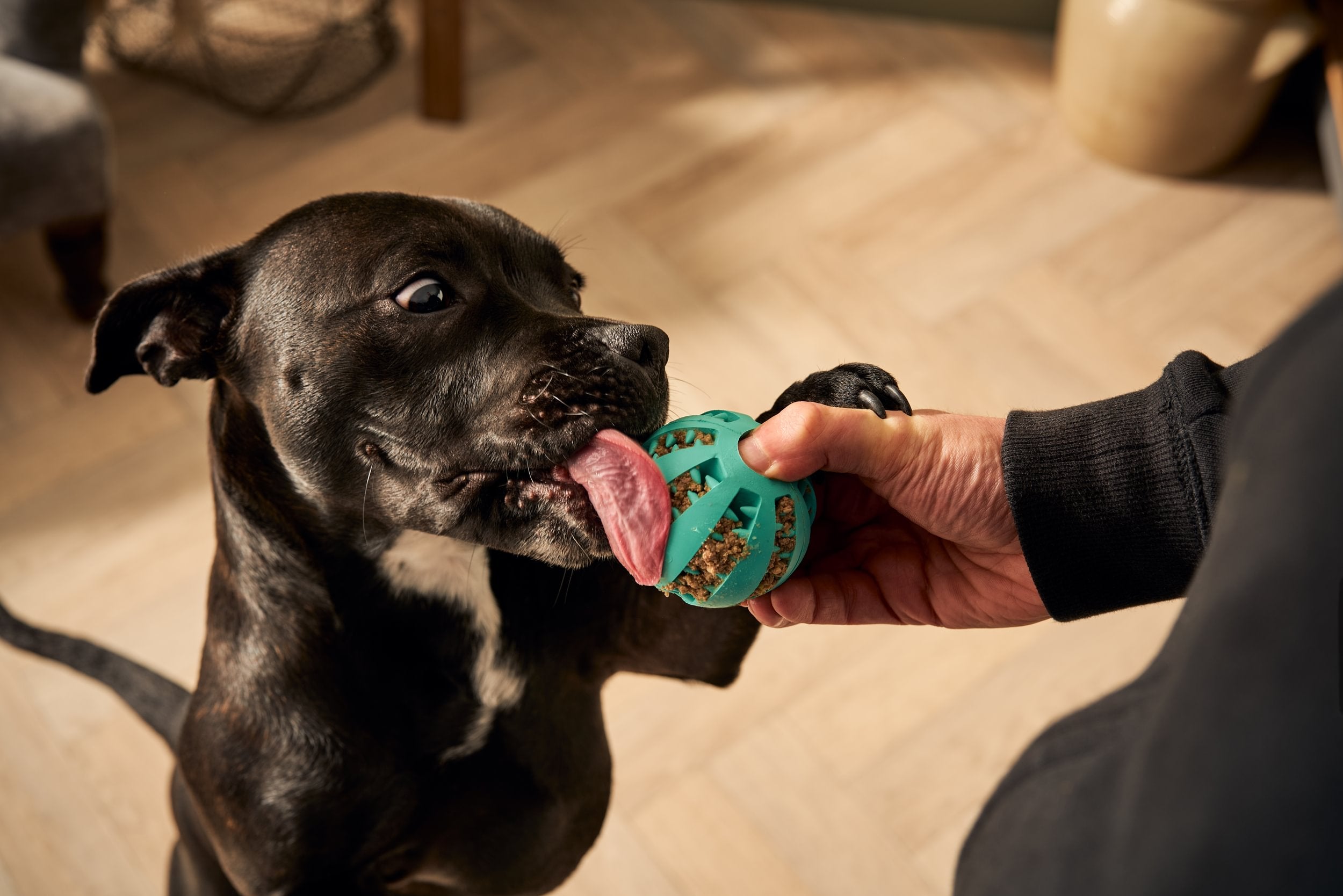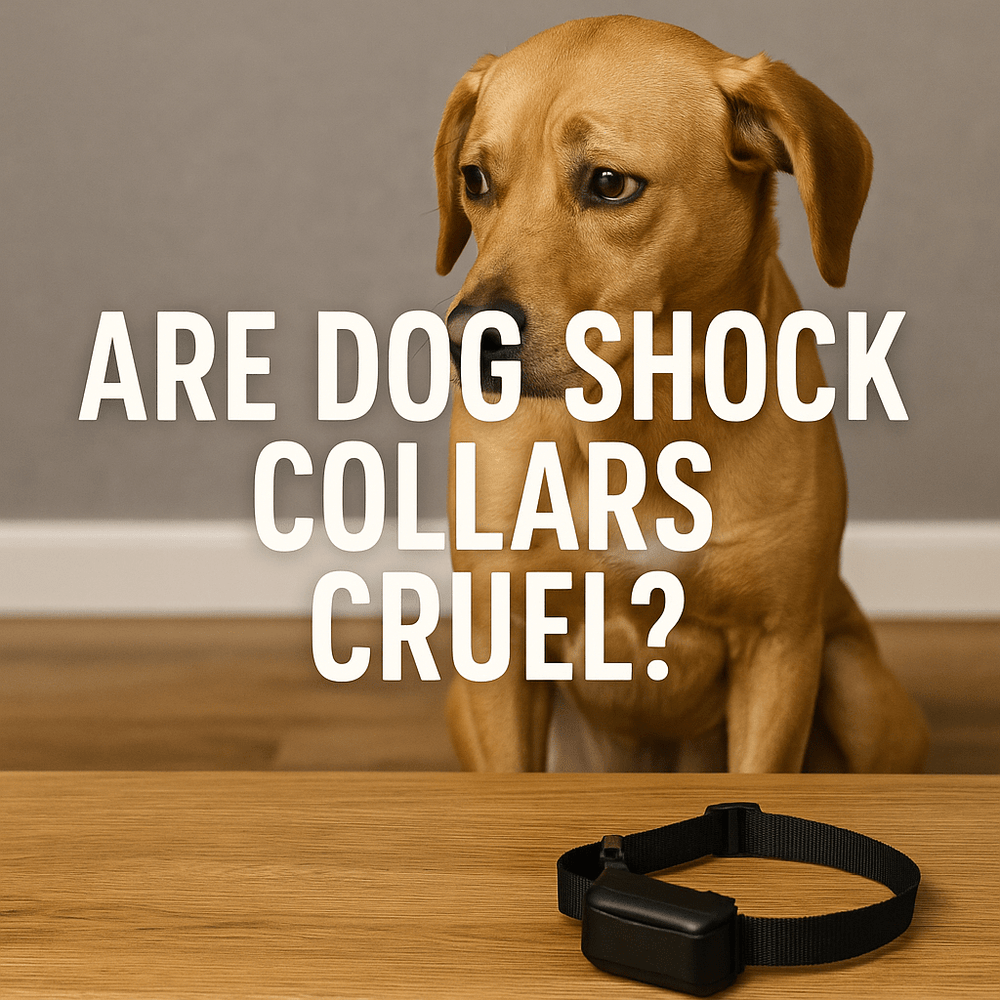Are you worried that a dog shock collar might hurt your furry friend? You’re not alone.
Many dog owners wonder if these collars cause pain or discomfort. Understanding how they work and what your dog actually feels can help you make the best choice for your pet’s training and safety. Keep reading to discover the truth about dog shock collars and find out if they are right for you and your dog.

Credit: www.amazon.com
Dog Shock Collar Basics
Understanding dog shock collars is important before deciding to use one. These collars deliver a small electric pulse to your dog’s neck. The pulse is meant to get the dog’s attention, not to cause pain. Many dog owners wonder about their safety and how they work. Knowing the basics helps you make a better choice for your pet.
Purpose Of Shock Collars
Shock collars aim to aid in dog training. They help correct unwanted behavior like barking or running away. The collar sends a signal when the dog misbehaves. This signal can be a beep, vibration, or a mild shock. The goal is to teach dogs to avoid certain actions. The collar is a tool to improve communication between owner and dog.
Types Of Shock Collars
- Static Shock Collars:Deliver a small electric pulse. The intensity can usually be adjusted.
- Vibration Collars:Use vibrations instead of shocks. Good for dogs sensitive to electric pulses.
- Beep Collars:Emit a sound as a warning. Often used before the shock or vibration.
- Remote Shock Collars:Controlled by the owner using a remote. Useful for off-leash training.
- Automatic Shock Collars:Activate when the dog barks or moves. No owner control needed.
Mechanism Of Shock Collars
Shock collars deliver a mild electric pulse to a dog’s neck. This pulse acts as a signal or correction during training. The device aims to get the dog’s attention without causing serious pain. Understanding how shock collars work helps clarify if they hurt dogs or not.
How Shock Collars Work
The collar has two metal probes that touch the dog’s skin. It sends an electric pulse through these probes. The pulse causes a tingling or buzzing feeling. This sensation is meant to interrupt unwanted behavior.
Most collars are remote-controlled by the owner. They press a button to send the pulse. Some collars react automatically to barking or other actions. The goal is to teach the dog to stop certain behaviors.
Intensity Levels Explained
Shock collars offer different levels of intensity. These range from a light vibration to a stronger pulse. The lowest levels produce a mild sensation, like a small static shock. Higher levels increase the pulse’s strength.
Owners should start at the lowest level and only increase if needed. The right level depends on the dog’s size and temperament. Proper use means the collar should not cause pain but serve as a clear warning.
Potential Risks And Harm
Shock collars are often marketed as quick training tools, but you should carefully consider the potential risks and harm they can cause to your dog. These devices deliver an electric shock, which may seem harmless at first glance. However, the effects on your dog’s body and mind can be more serious than you expect.
Physical Impact On Dogs
Electric shocks can cause immediate pain and discomfort to your dog. The intensity of the shock varies, but even low levels might cause muscle spasms or burns on the skin where the collar contacts. Some dogs develop sores or hair loss around the collar area after repeated use.
Think about how sensitive a dog’s skin is compared to ours. You might not feel much from a mild shock, but your dog could be experiencing significant pain. Over time, this physical discomfort might lead to other health issues like inflammation or infections.
Psychological Effects
The psychological impact can be even more troubling. Dogs subjected to shock collars often show signs of fear and anxiety. They may associate the pain with certain places, people, or other dogs, which can increase stress instead of reducing unwanted behavior.
One dog owner shared how their usually playful pet became withdrawn and hesitant after using a shock collar. This change in behavior highlights that the emotional toll can affect your dog’s quality of life. Could a different training approach build trust rather than fear?

Credit: www.amazon.com
Scientific Studies And Findings
Scientific studies and findings provide valuable insights into whether dog shock collars cause pain or harm. Understanding the research helps you make informed decisions about using these devices responsibly. Let’s examine what science and experts say about the effects of shock collars on dogs.
Research On Shock Collars
Several studies have tested how dogs react to shock collars under controlled conditions. Research often measures stress hormones, behavior changes, and physical reactions during and after shock collar use.
One study found that some dogs show increased signs of stress, such as whining or avoiding the collar, which suggests discomfort. However, other studies noted that when used correctly and at low settings, the collars did not cause lasting pain but served as a deterrent.
These mixed results highlight the importance of how and when shock collars are used. Have you considered how your dog might interpret sudden stimuli? The difference between mild correction and pain can be subtle but crucial.
Expert Opinions
Veterinarians and animal behaviorists often emphasize caution with shock collars. Many agree that these tools can cause fear or anxiety if misused. Experts suggest prioritizing positive reinforcement before considering aversive methods.
Some professionals say shock collars might be helpful for specific training challenges but only under expert guidance. They warn against over-reliance on shocks, as this can damage your relationship with your dog and reduce trust.
Would you want your dog to associate you with discomfort? Experts encourage evaluating alternative training techniques first. Understanding your dog’s unique temperament is key to choosing the best approach.
Alternatives To Shock Collars
Shock collars often raise concerns about causing pain to dogs. Many pet owners seek gentle, effective ways to train their dogs without risk. Alternatives to shock collars focus on kindness and understanding.
These options help build trust between dogs and owners. Training becomes a positive experience that encourages good behavior. Here are some popular alternatives to explore.
Positive Reinforcement Techniques
Positive reinforcement rewards good behavior with treats, praise, or play. This encourages dogs to repeat those actions happily. It strengthens the bond between owner and pet.
Common positive reinforcement methods include:
- Giving small treats for obeying commands.
- Offering verbal praise like “Good dog!”
- Using toys or playtime as rewards.
- Ignoring unwanted behavior instead of punishment.
This gentle approach helps dogs learn without fear or pain. It builds confidence and makes training fun.
Other Training Tools
Training tools can aid without causing discomfort. Some popular options are:
- Clicker training:Uses a small device to mark good behavior with a click sound.
- Head collars:Help control pulling gently without pain.
- Harnesses:Distribute pressure evenly to prevent choking.
- Leashes with shock absorption:Reduce pulling force for safer walks.
These tools support calm and effective training. They keep your dog safe and comfortable.

Credit: www.instagram.com
Legal And Ethical Considerations
Shock collars for dogs raise serious legal and ethical questions that every pet owner should consider before deciding to use one. These devices are not just tools; they impact your dog’s well-being and your responsibility as a caregiver. Understanding the rules around their use and the moral debates involved can help you make a more informed choice.
Regulations On Use
Many countries have laws regulating or even banning shock collars. In parts of Europe, such as Germany and Norway, these collars are illegal because they are seen as harmful. In the United States, regulations vary from state to state, with some places requiring strict guidelines on their use.
Before buying or using a shock collar, check your local laws carefully. Ignoring these rules can lead to fines or legal trouble. Also, knowing the legal limits can guide you to use training tools that are both safe and lawful for your dog.
Ethical Debates
Ethical concerns focus on whether it’s right to use pain or discomfort to train dogs. Many trainers argue that shock collars cause unnecessary stress and fear. They believe positive reinforcement methods are more effective and kinder.
Have you ever wondered if your dog’s obedience is worth the risk of causing them pain? Some pet owners share stories about how shock collars damaged the trust between them and their dogs. These experiences highlight that training should not come at the cost of your dog’s emotional health.
Think about your dog’s feelings and your long-term relationship. Could gentle, reward-based training methods achieve the same goals without ethical dilemmas? Your choice affects not just behavior but the bond you share with your pet.
Tips For Responsible Pet Training
Training your dog responsibly is key to building a strong, trusting relationship. Shock collars often spark debate, but how you use any training tool matters most. Here are practical tips to help you train your pet effectively while prioritizing their well-being and comfort.
Choosing The Right Training Method
Not every dog reacts the same way to training tools. Some respond well to positive reinforcement like treats or praise, while others might need firmer guidance. Before deciding on a shock collar, consider gentler alternatives like clicker training or leash corrections.
Think about your dog’s personality and past experiences. Have you noticed signs of fear or anxiety during training? If yes, a shock collar might do more harm than good. Always pick methods that encourage learning without causing stress or pain.
- Test low-intensity settings first to avoid unnecessary discomfort.
- Combine training tools with rewards to create positive associations.
- Consult a professional trainer for tailored advice on your dog’s needs.
Monitoring Your Dog’s Response
Watching your dog closely during training sessions is essential. Notice their body language—ears back, tail tucked, or attempts to escape are clear signs of distress. If you see these, stop immediately and reassess your approach.
Training isn’t just about obedience; it’s about communication. Ask yourself: Is my dog learning without fear? Does the training encourage confidence? If the answer is no, it’s time to change tactics.
Keep a training journal to track progress and reactions. This helps spot patterns and adjust methods before problems escalate. Remember, your dog’s comfort should always guide your choices.
Frequently Asked Questions
Do Dog Shock Collars Cause Pain To Dogs?
Dog shock collars deliver a mild electric stimulus. This sensation can cause discomfort but is usually not painful. Proper use and settings reduce any risk of harm or pain to dogs.
Are Shock Collars Safe For All Dog Breeds?
Shock collars can be safe if used correctly. However, small or sensitive breeds may react negatively. Always consult a vet before use and follow manufacturer guidelines.
How Do Shock Collars Affect A Dog’s Behavior?
Shock collars can deter unwanted behavior through negative reinforcement. Misuse may cause fear, anxiety, or aggression. Positive training methods are often recommended for better results.
Can Shock Collars Cause Long-term Harm To Dogs?
When used properly, shock collars rarely cause long-term harm. Overuse or high settings can lead to stress or behavioral issues. Supervised and limited use is crucial for safety.
Conclusion
Dog shock collars can cause pain if used wrong. Some dogs may feel discomfort or stress. Training with kindness often works better and safer. Always watch your dog’s reaction closely. Use gentle methods to build trust and good habits. Remember, a happy dog learns best.
Choose tools that help, not hurt. Care and patience bring better results in training.







